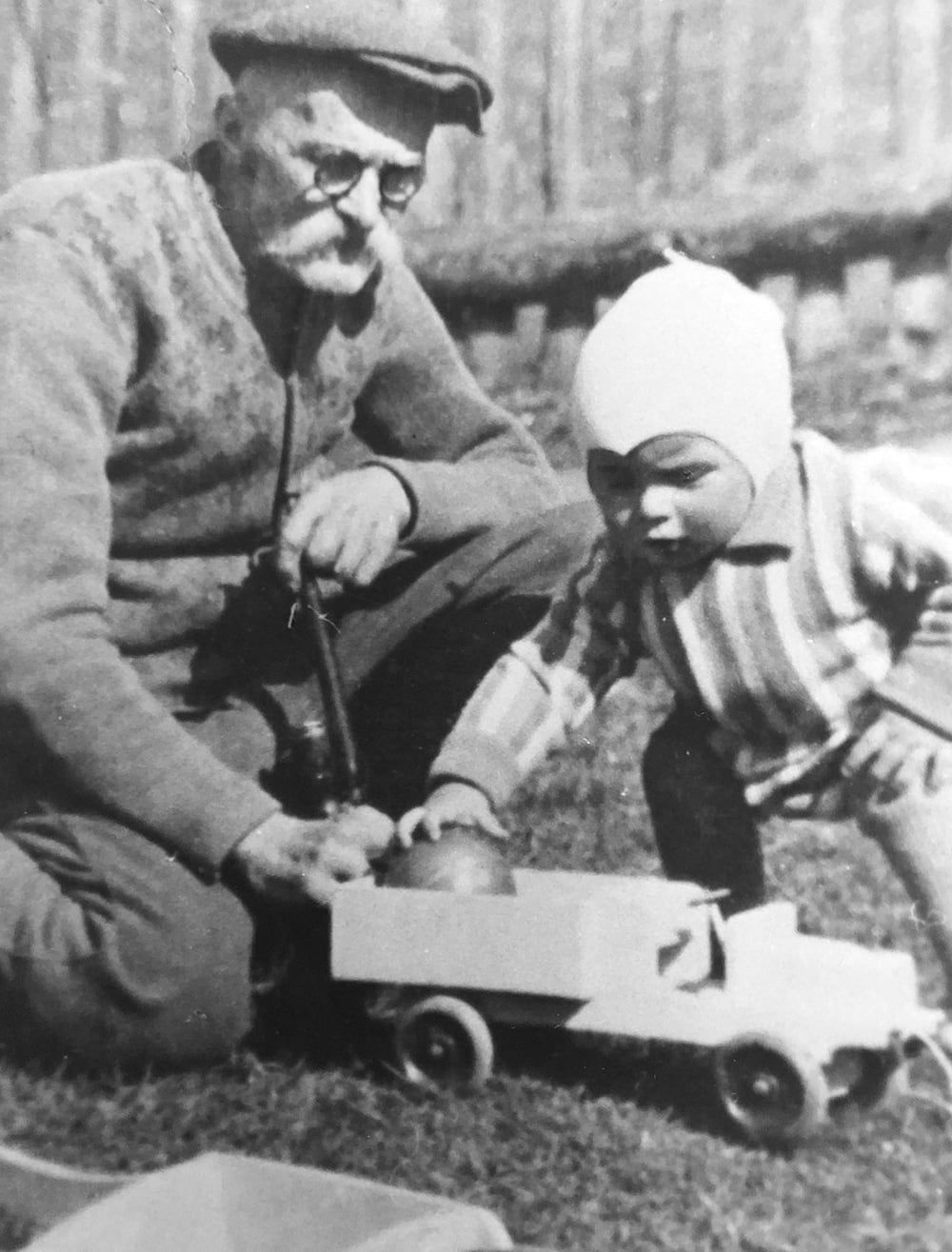
10 August 1931
Otto Zapf was born in 1931 in Rossbach, Czechoslovakia (known as Sudentenland, Germany, before WWII), where his family has been running a carpentry business for three generations.

Age 14
At the age of fourteen, Otto Zapf and his family are forced to flee their family home and business in Rossbach, following the end of the Second World War. In 1945, the family reaches Frankfurt on foot and by freight train, and continues to Eschborn, Germany, where they are taken in as displaced persons. Their displacement into a new town, still under the restraints of wartime, with no belongings, is trying and life-altering. Zapf’s father re-starts the family’s 75 year-old carpentry business anew.
By the age of seventeen, Zapf broke with family tradition, taking advantage of Germany’s tuition-free education to dedicate himself to the study of mathematics and physics at the J. W. Goethe University of Frankfurt. A sensitivity to human comfort, and a fascination for mathematical problem solving, both seeded at this time, later become essential elements of Zapf’s design signature.
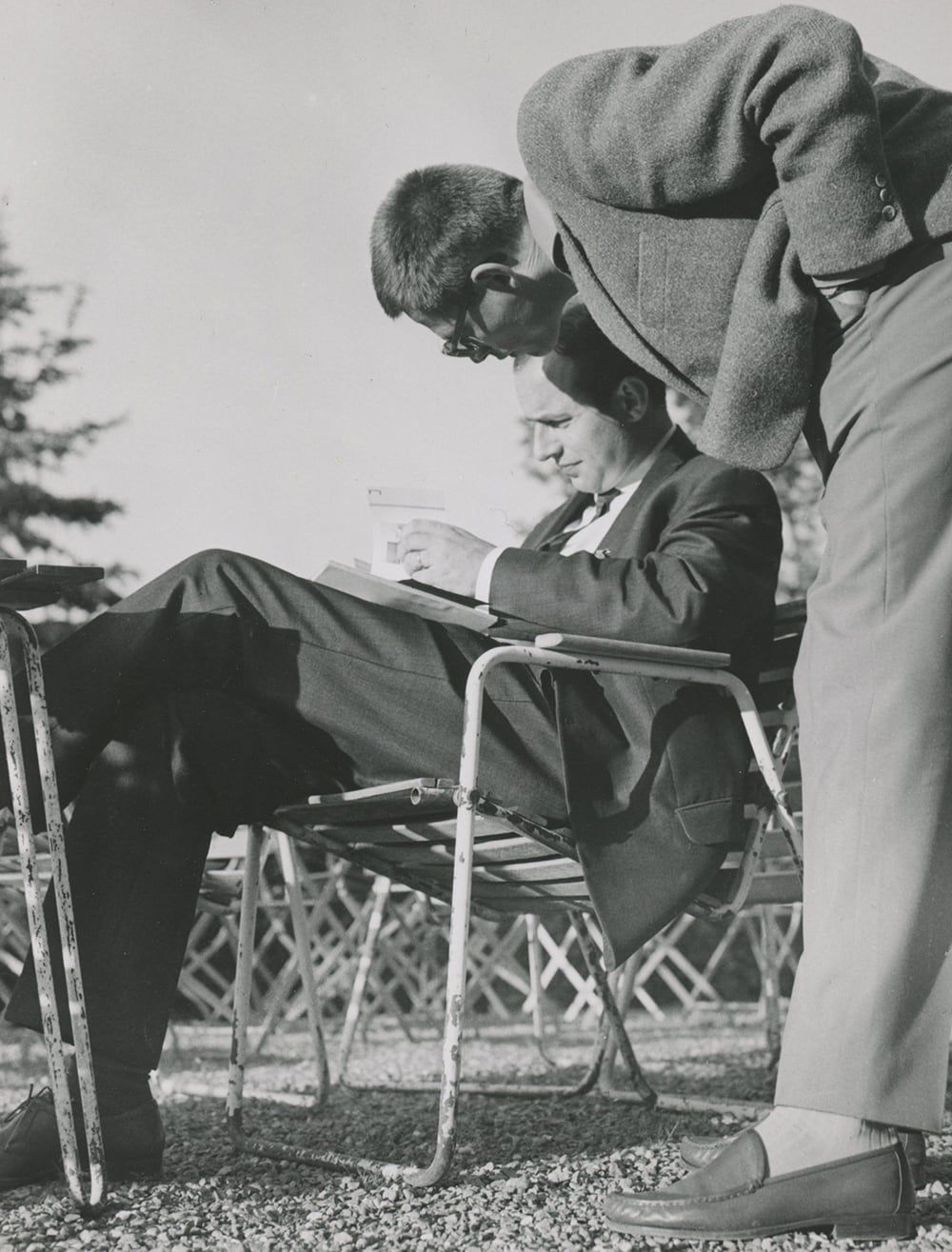
Age 25
Fascinated with modern design and architecture while still at university, Otto Zapf joins a design collective with graphic designer Günther Kieser and architect Rolf Schmidt, who he meets at the Kronberg tennis club, who encourage him to create his own designs. When his father asks him to help with the family’s carpentry business, Zapf creates a completely new modern style. This creates an opening for him to break away from other, perhaps all, conventional notions and thinking about furniture design.
Against the conservative backdrop of post war recovery, Zapf, should be Kieser and Schmidt present their work at the Kelkheim Furniture Days with youthful audacity. In an innovative press stunt, they draw footprints on the floor of the exhibition hall, walking people directly to their exhibit. This elicits a tremendous outcry. Success.
Zapf and Kieser’s friendship and collaboration will last a lifetime. Both designers are highly experimental and part of the cultural zeitgeist of their time. About a decade later, in 1969, as Otto Zapf launches his avant garde Softline program, Günther Kieser created his iconic Jimi Hendrix Experience poster.
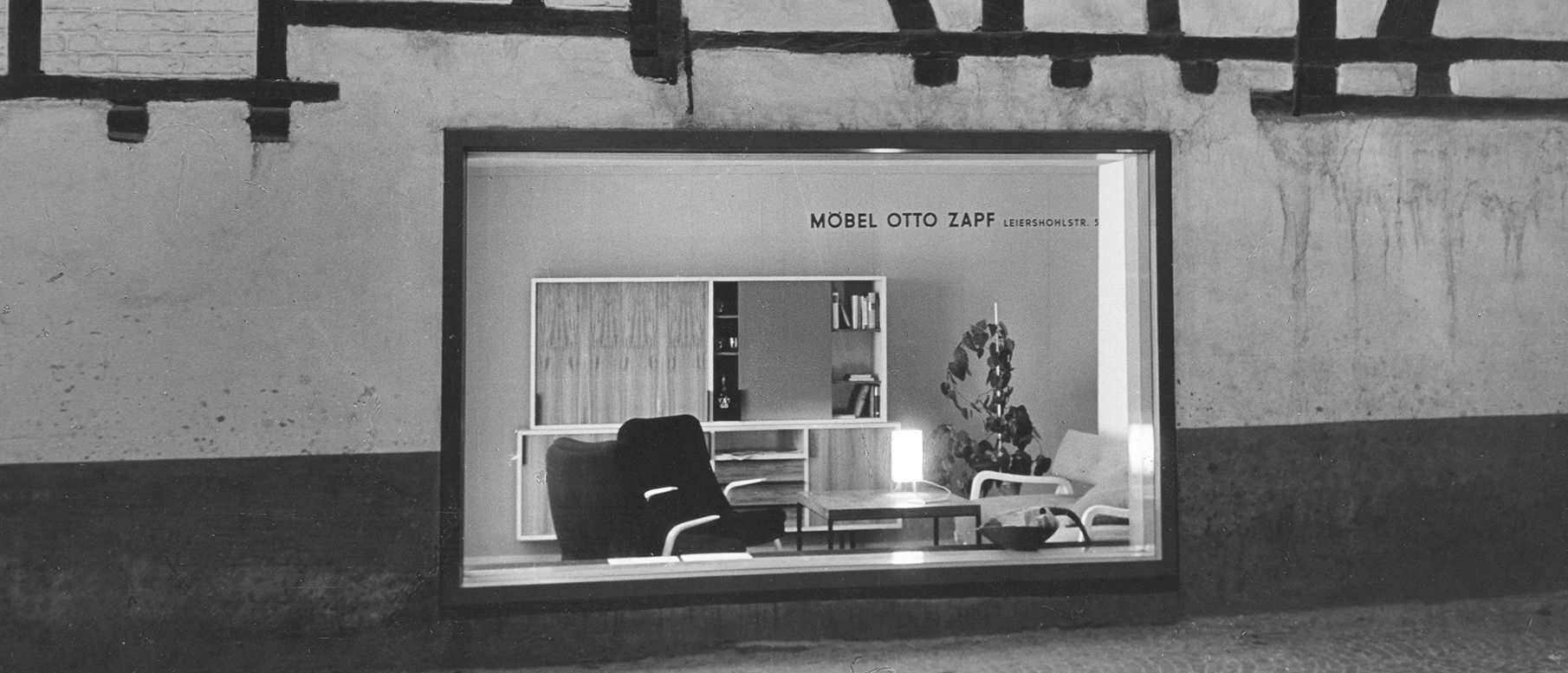
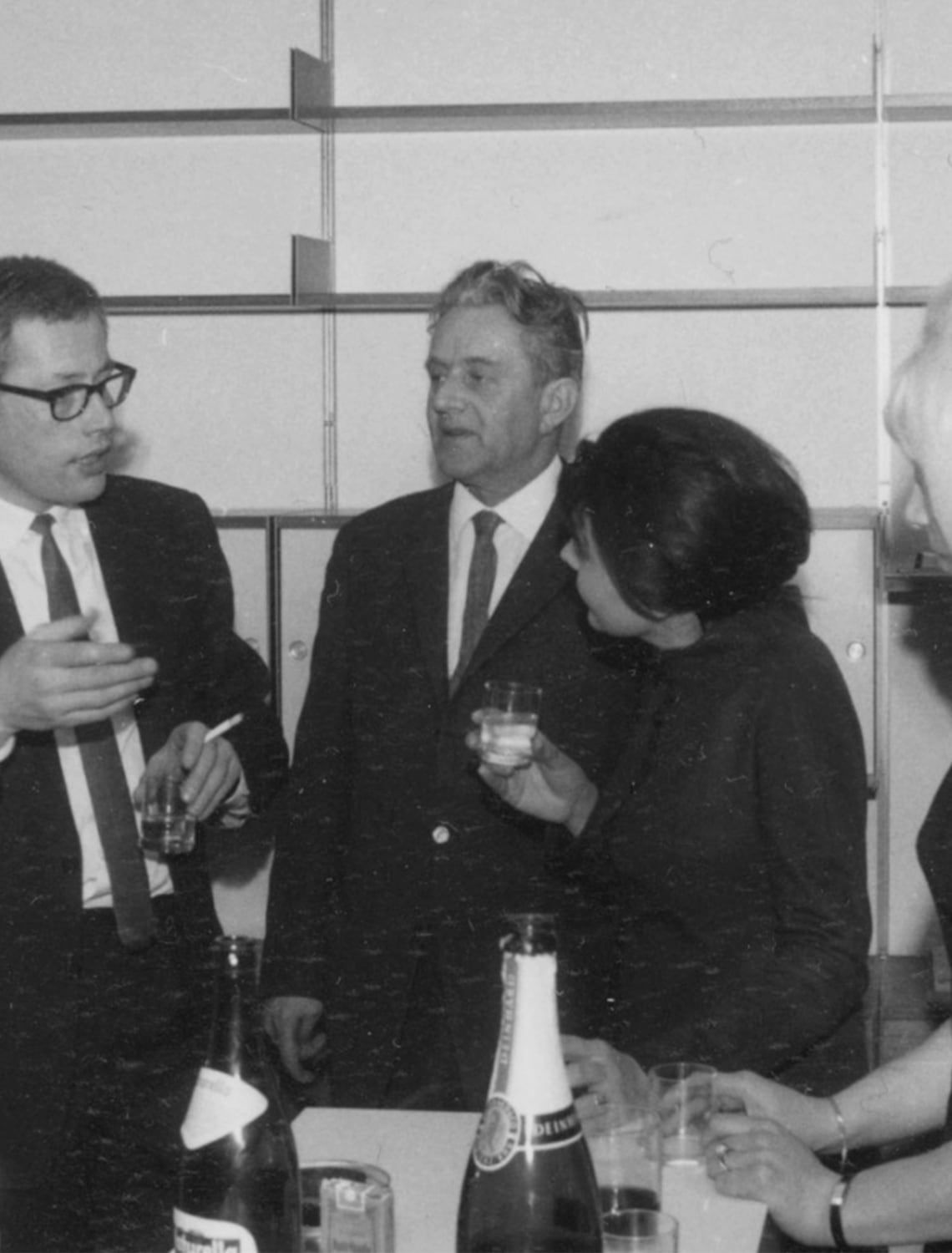
Age 26
At the age of 26, Otto Zapf initiated a collaboration with Dieter Rams (who is already an industrial designer at Braun). Out of this collaboration comes the early RZ 606, RZ620 and RZ621 designs (RZ standing for Rams - Zapf), which would become design classics and are still being produced by Vitsoe. The complete RZ program demonstrates Zapf’s focus on maximum flexibility and individuality.
A vibrant soul and ingenious marketer, Zapf inserts an enormous window into a barn’s street - front wall , giving their designs visibility they couldn’t afford to buy. This pop-up, perhaps the industry’s first, shows passerby how to live in a contemporary way.
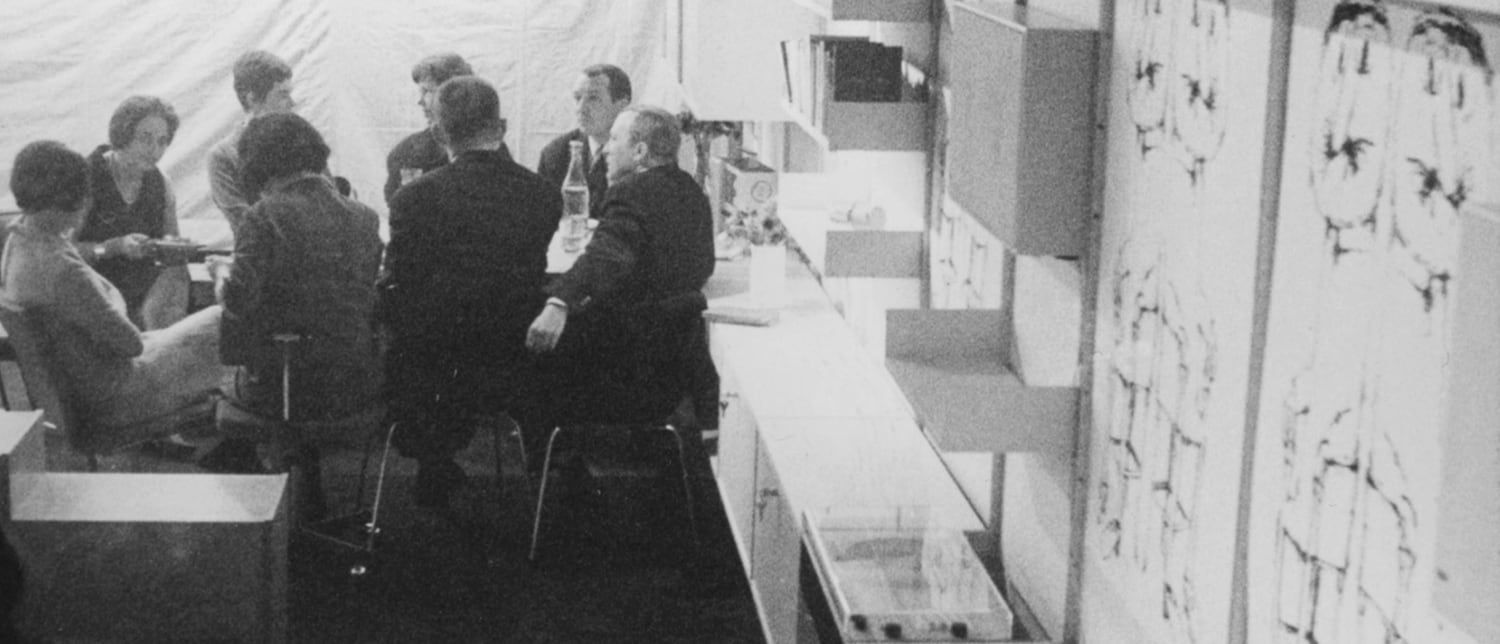

At about the same time, Otto Zapf marries the love of his life, Rosalie, and inaugurates his own showroom, which becomes a creative hub and the place to see new, innovative furniture designs. Otto Zapf (with his wife Rosalie) and Dieter Rams, live, work, and collaborate in close proximity, each having an apartment on either side of the design studio.
Age 28
In a bold move, Otto Zapf founds the renowned Vitsoe + Zapf in 1959 as a way of distributing the RZ designs. Zapf introduces Rams to Danish furniture distributor Mr. Niels Wiese Vitsœ, setting a new chapter in motion. Both the company and the RZ furniture line rapidly rise to the attention of the international market.


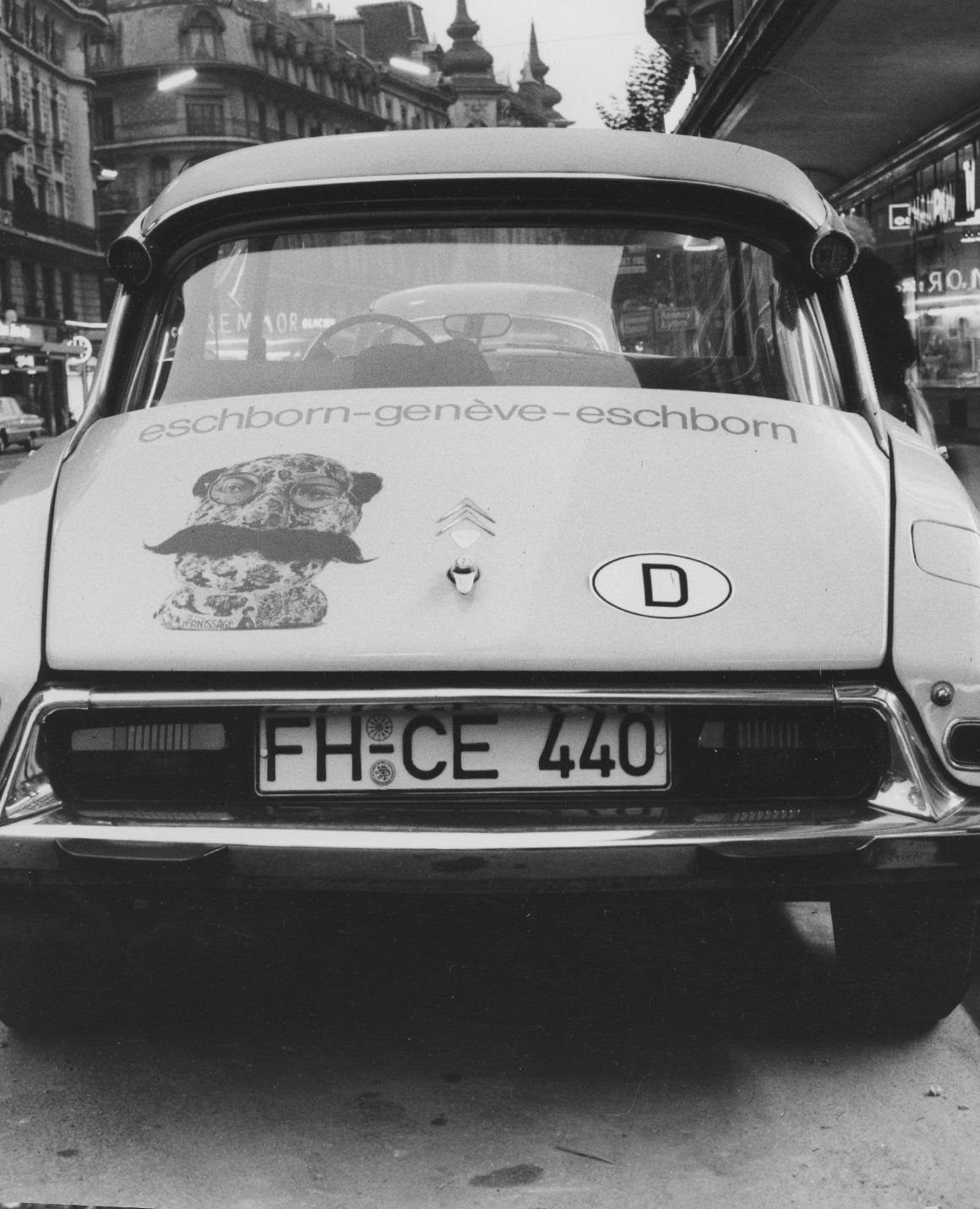
Age 36
In 1967 Otto Zapf strikes out against convention, transfers out of Vitsoe + Zapf (which then becomes Vitsoe in 1969), and opens his own studio, Indesign, later known as Zapfdesign.
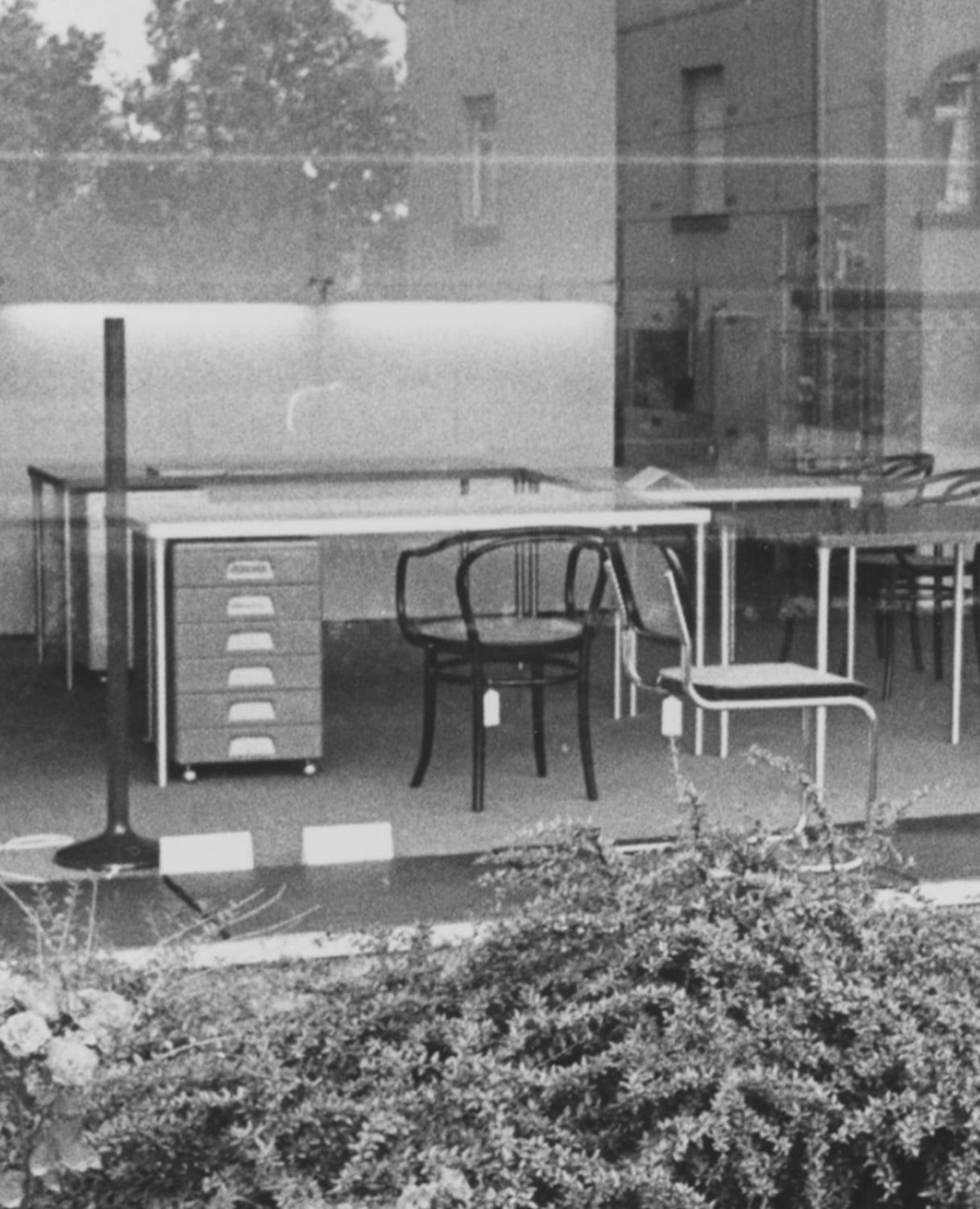
This is a highly creative time in which Zapf channels his fascination with form,
specifically how to
make it rounder and easier to live with, into experimenting with innovative
materials. He is
especially engrossed with fiberglass, which is also being used by artist Allen
Jones.
Otto Zapf begins producing his own designs and soon introduces the world to the
Column Table and the
Illuminated Column lamp. Produced in small quantities, the Column series remains
rare and
collectible.
Also during this time, Zapf creates desks, cabinets, bookcases, loungers and chairs with fiberglass bases, frames, and shells, including: Sofalettes, Arcadia, Comudus, Calix.
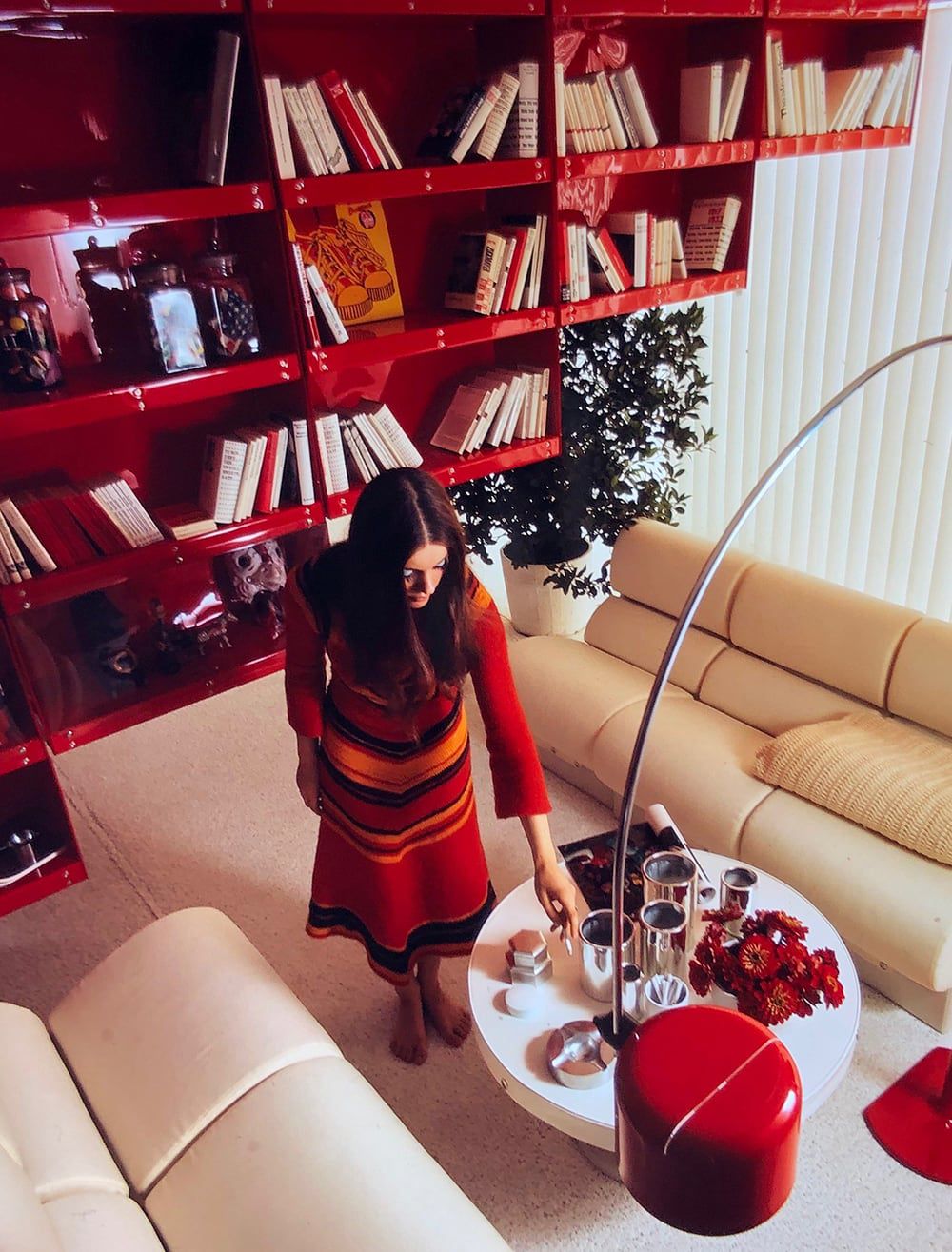
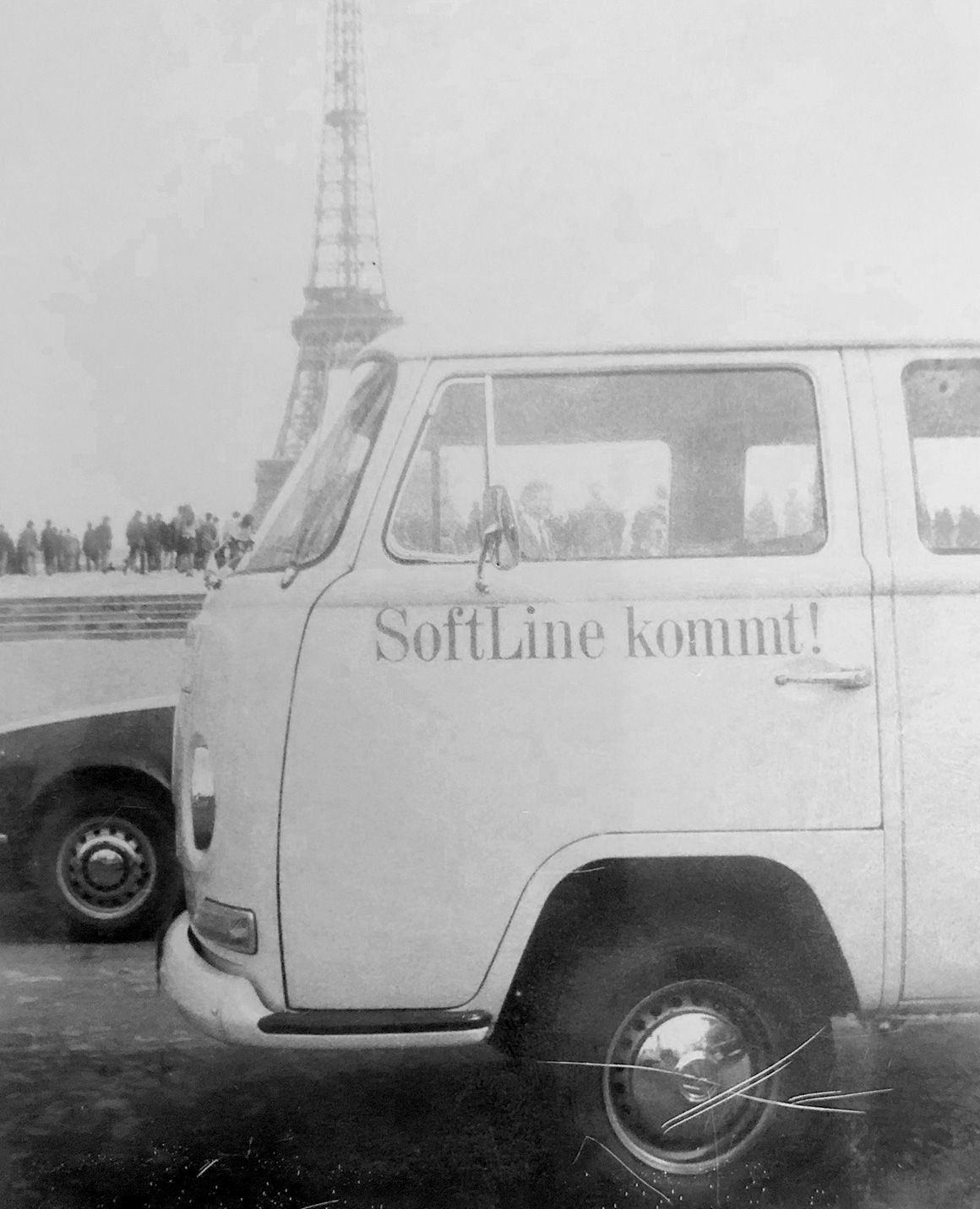
In an ingenious marketing move, Otto Zapf takes the line to Paris in the Softline VW Minibus and also creates the brilliant His & Hers pop-up store, made entirely out of Softline materials for friends Richard and Gudrun Meuer.
Age 38
In 1969, The Beatles launch Abbey Road, Otto Zapf’s longtime friend and collaborator Günther Kieser designs the iconic Jimi Hendrix Experience poster, and he himself introduces the avant-garde Softline shelving program.
Inspired by fashion's ski-chic colors and snaps on a holiday, everything about Zapf’s Softline is revolutionary.
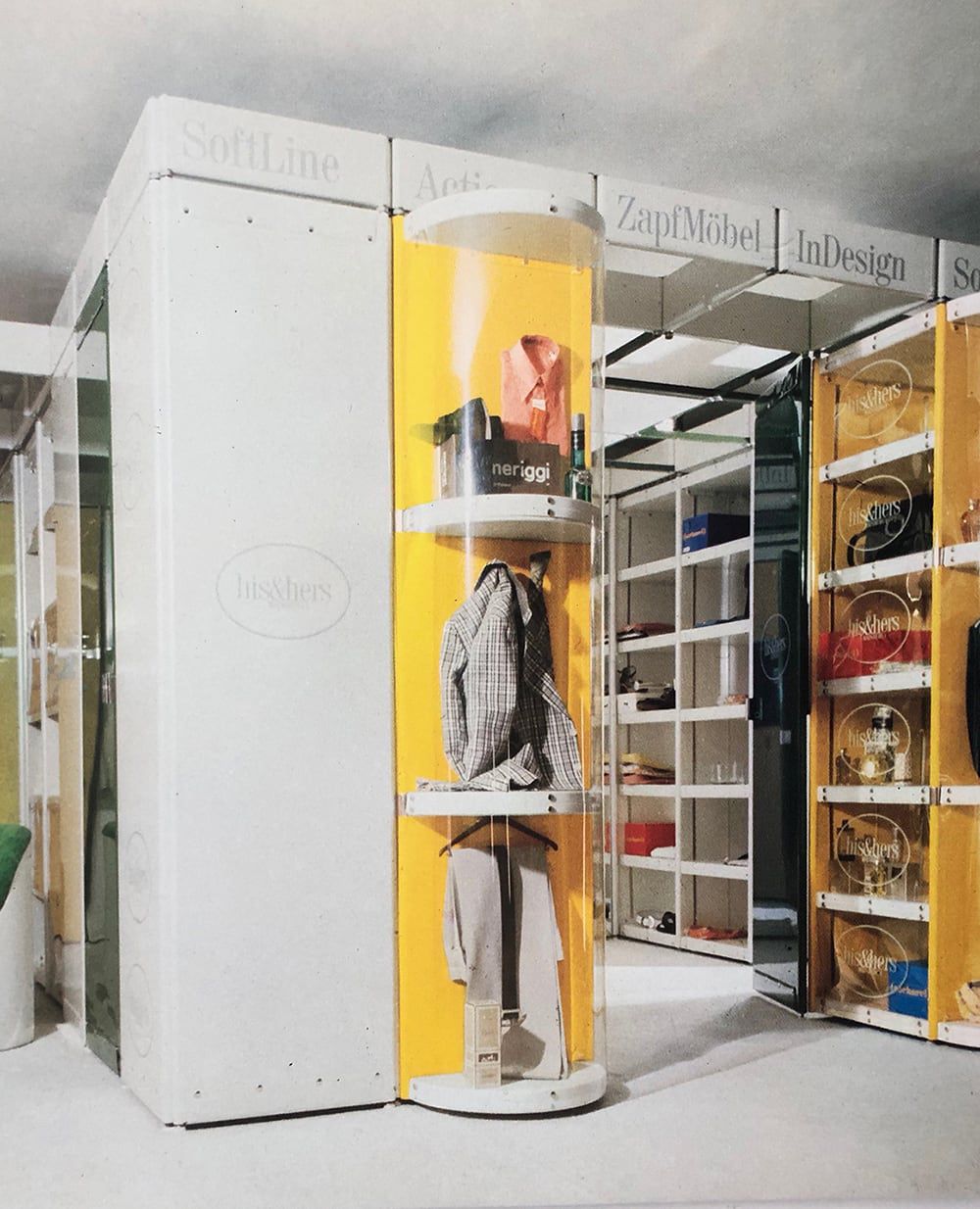

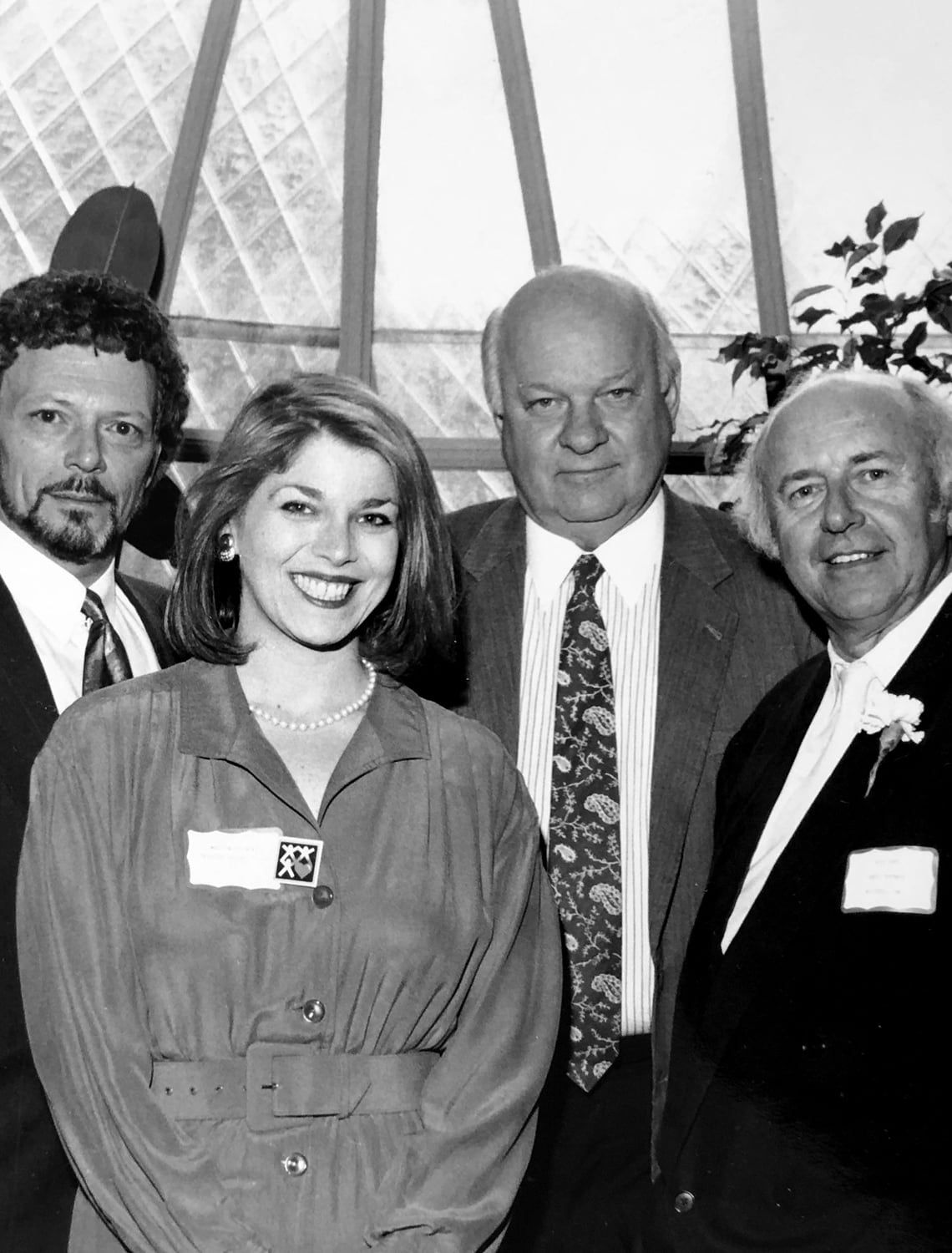

Now an affirmed and recognized product designer in Europe, Zapf catches the eye of Texan Bobby Cadwalladar, President of Knoll International.
Age 41
Building on the success of Softline, Otto Zapf designs Pillorama in 1972, an explosion of optimism and color called, grounded in a design that is called “as epochally simple as it is new”. In the same year, he receives the Bundespreis “Gute Form” for the Illuminated Column Lamp.

Creatively on fire, Zapf places himself at the center of the design world’s attention at the Exhibition at the Eschorner Stadthalle, filling the entire convention hall with Pillorama and hosting fantastical parties amidst the colorful, artfully arranged collection.
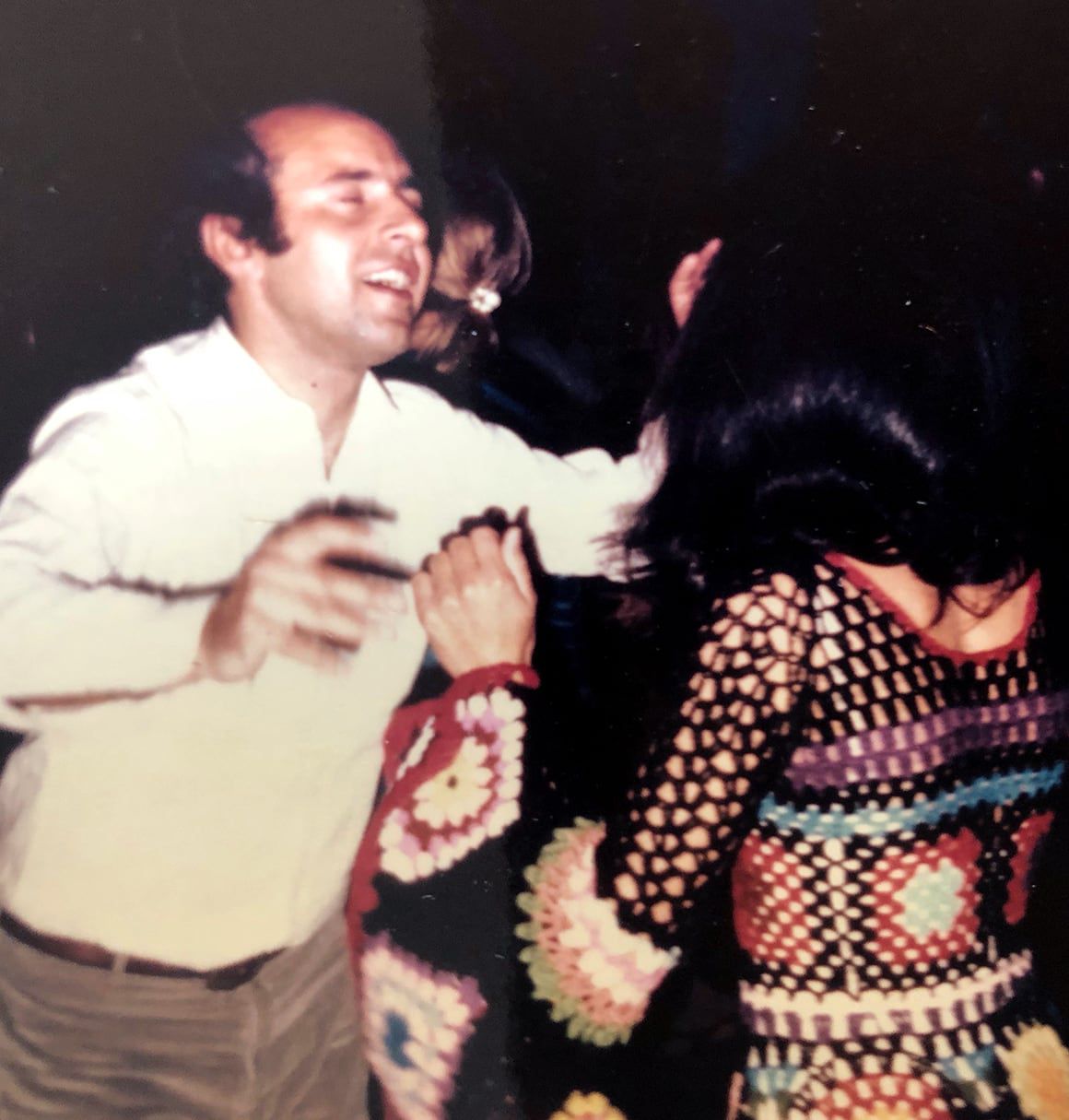
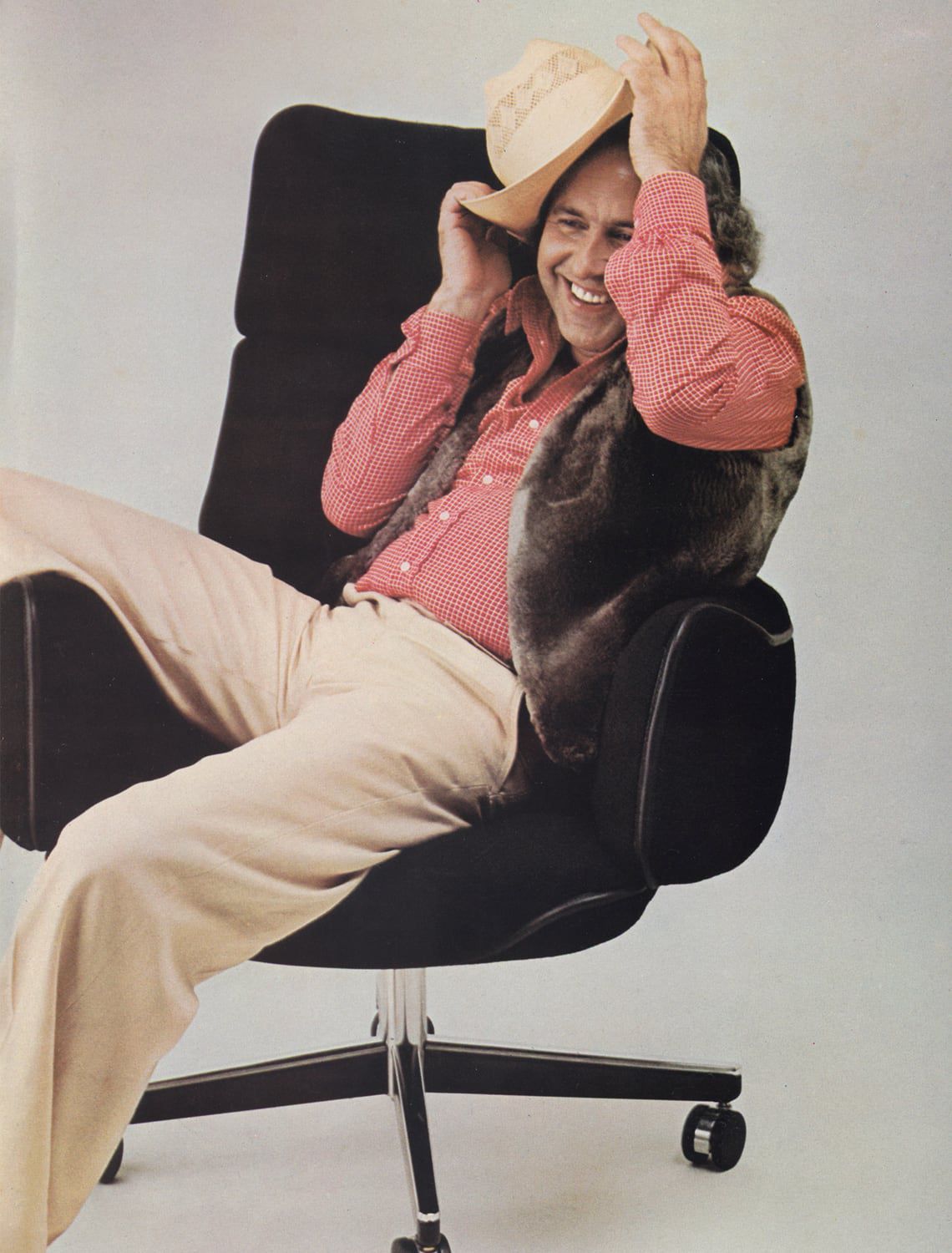
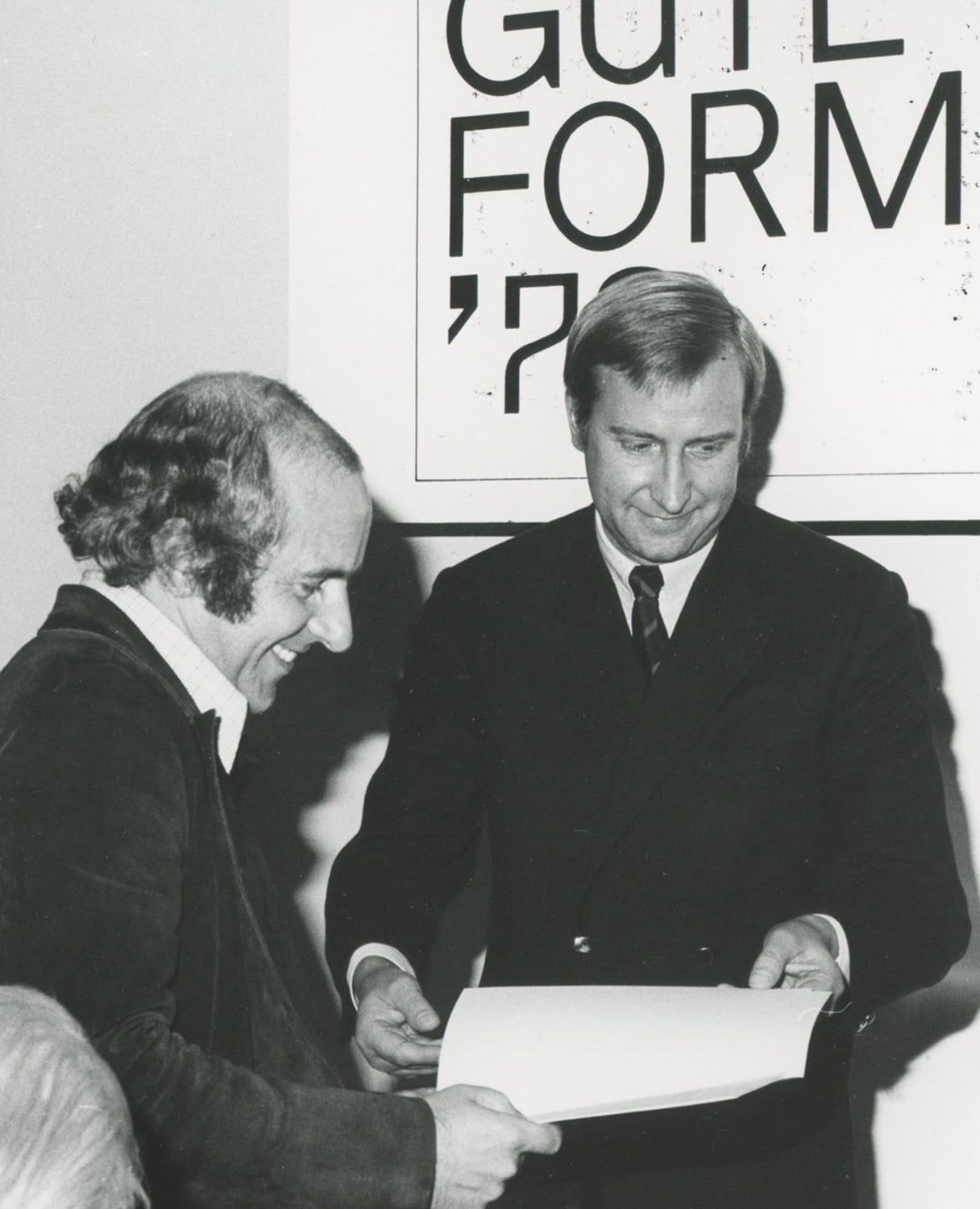
Age 42
Otto Zapf begins working with Knoll International in 1973 and in the same year
launches a joint,
era-defining campaign for Pillorama, photographed by Oliviero Toscani. Toscani would later
become
world-renowned for his provocative and controversial campaigns for Benneton.
With Knoll, a firm he considers “still an island of humanitarianism,” Zapf seeks to
design office
layouts that will improve the feel of the workplace.

His first product launch with Knoll is the Zapf Office Chair, presented at Neocon in Chicago in 1974. The chair materializes Zapf’s belief in human-centric, “healthy seating” that encourages natural movement. In the same year that it is presented, Knoll places an order for $1.2 million dollars.
In 1974, Otto Zapf also designs the Pollorama seating-scape for Knoll International, launched with an exuberant campaign that includes his family. In the same year, the University of San Francisco commissions Zapf to furnish its campus with Pollorama.


Age 44
In 1975, Otto Zapf's engineering mind and Softline ingenuity came together in the Zapf Office System for Knoll, a modular landscape composed of individual workstations and textile-covered partitions. Utterly innovative and human, the Zapf office system is called “enlightened” and “ahead of its time.” This collaboration marks Knoll’s first venture into office and systems furniture.

Liz Needle, head of Knoll at the time, says of the system: “We owe the durability of the system to the care with which every employee is given a sense of belonging. The system includes humanity. It makes the office smoother.”

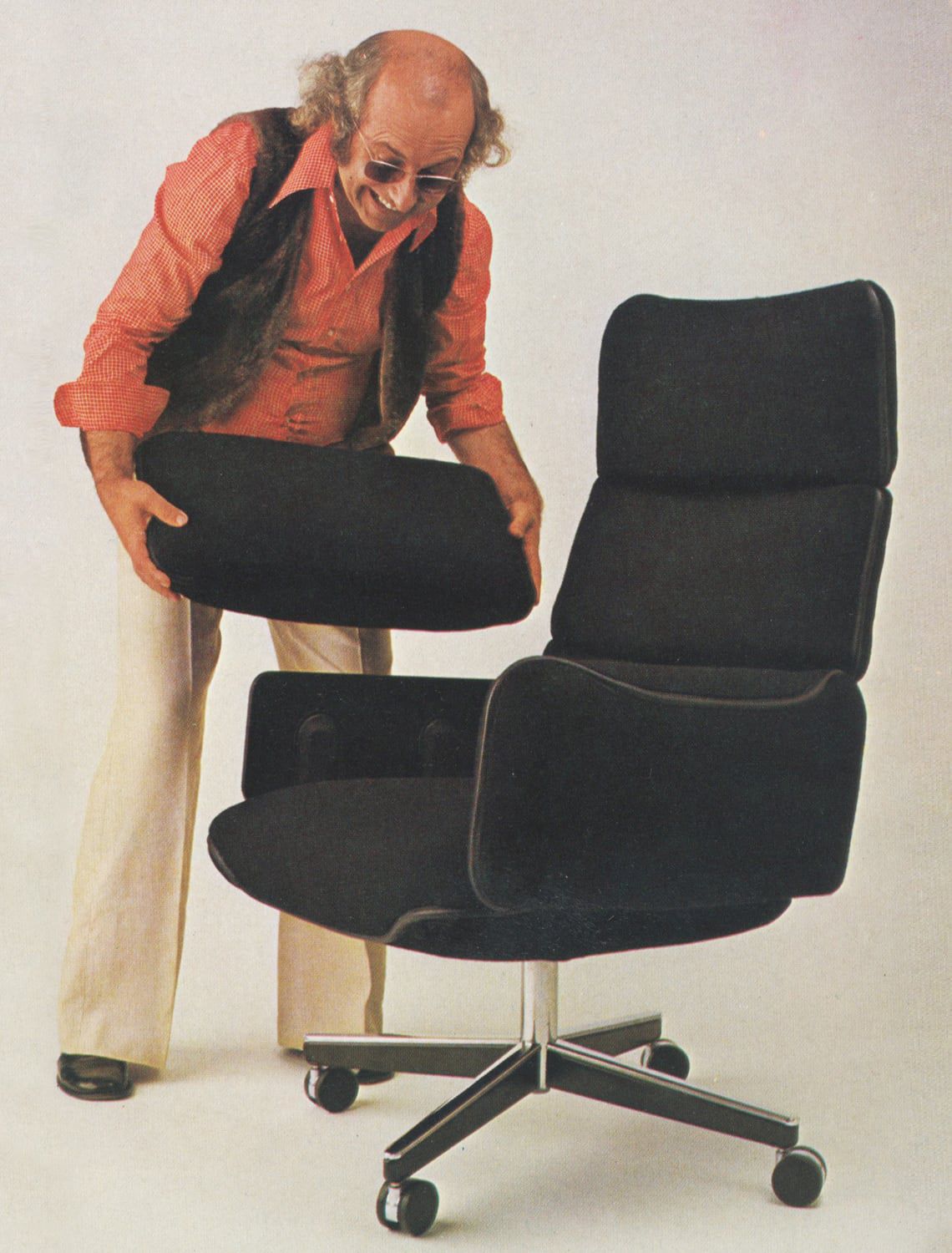
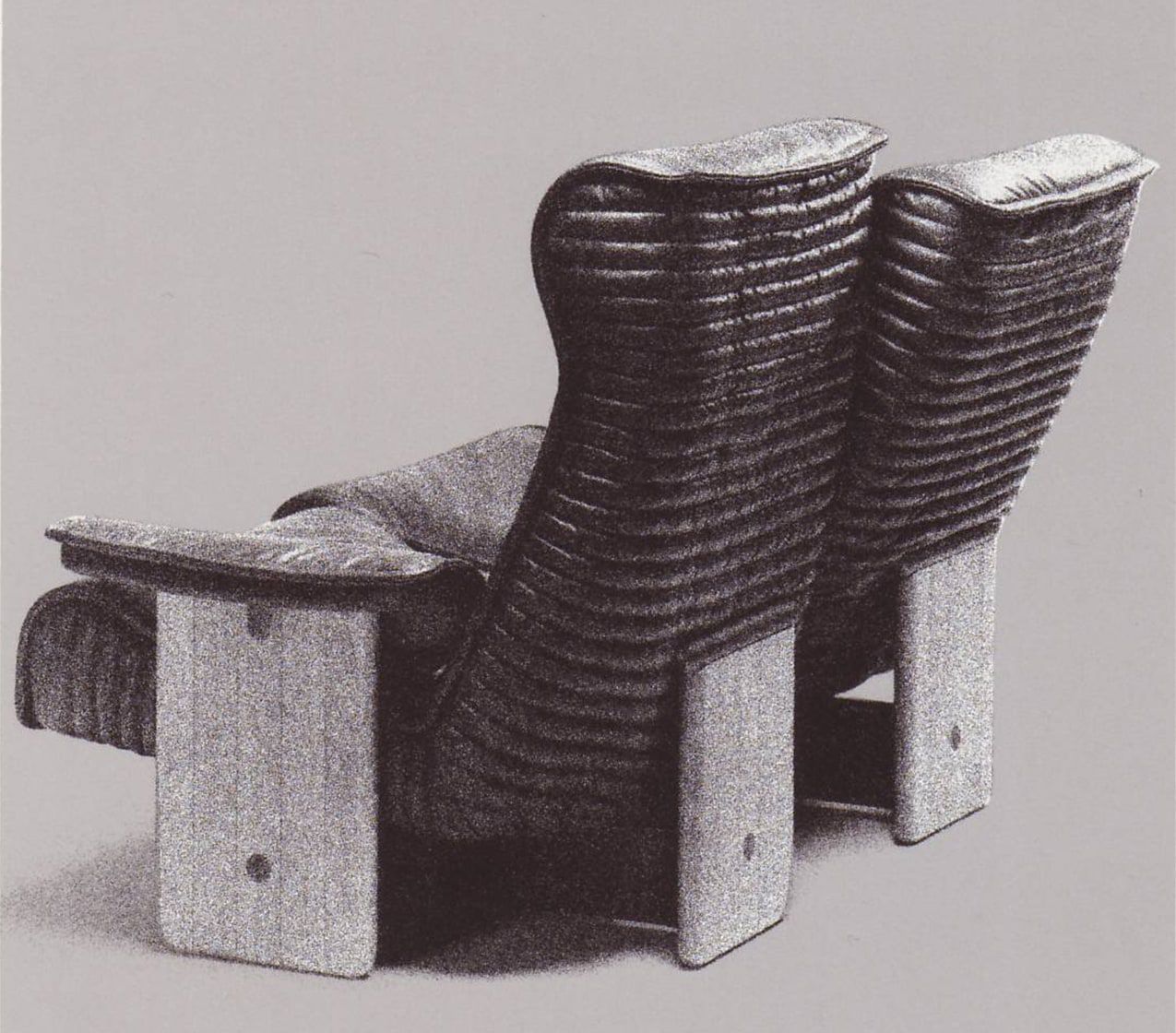
Age 48
Otto Zapf’s Follow Me arm chair and sofa, presented with Knoll International in
the 1979 Salon del
Mobile in Milan, mark the starting point of his dedication to the design of
“healthy sitting.”
In Zapf's opinion, a person can only relax if fully supported by
the furniture, and
able to change the sitting position regularly. He is unsentimental about walking
away from
traditional designs and old ways of thinking if they do not work to
make people’s lives better.
From the Knoll catalog introducing his chair designs: “The talented Otto Zapf is a man of formidable ingenuity and imagination. …He clearly thinks comfort ranks in importance with esthetics: his chairs not only look very inviting but are deliciously comfortable.”
Over the next few years, he will focus almost exclusively on the design of seating features, including: Tempora for Cor (1980), Comtesa and Paliseda for Matrapol (1980), Responda for B&B Italia (1981), Helichair for Knoll International (1981), Sofalets83 for Interprofil (1982), and Teamset for Drabert (1982).

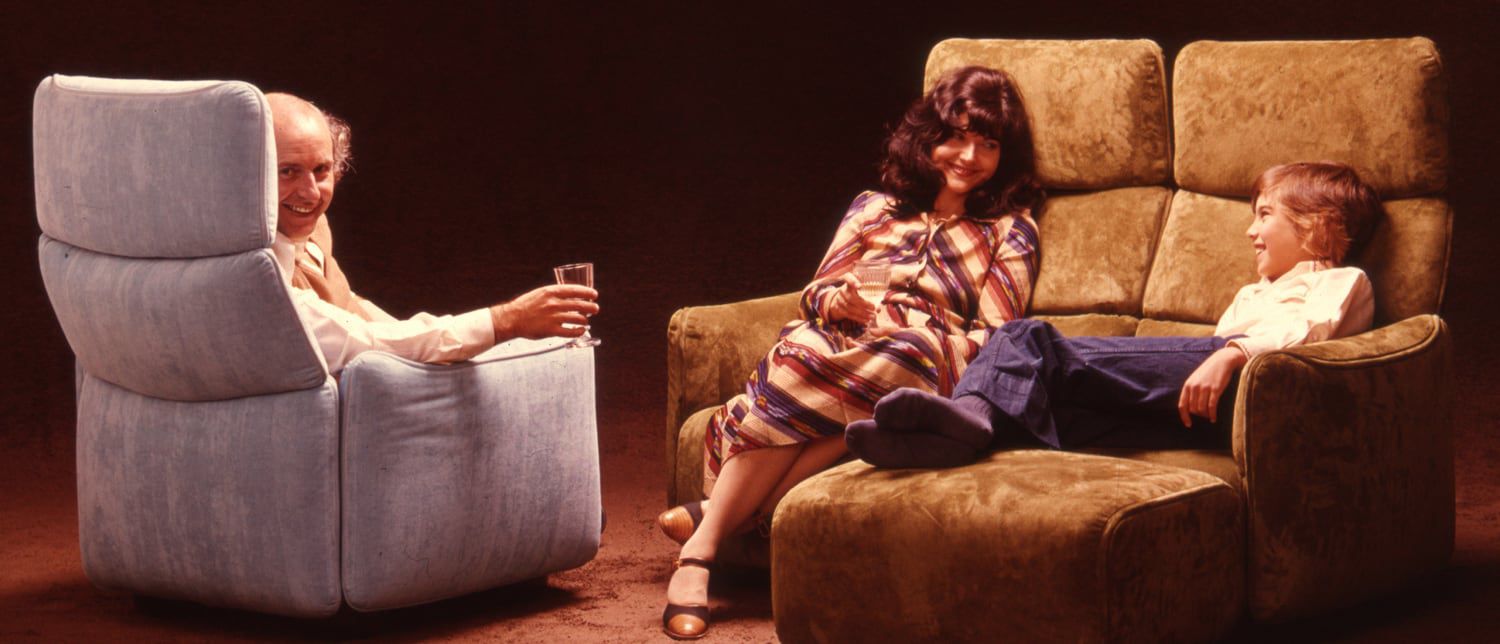
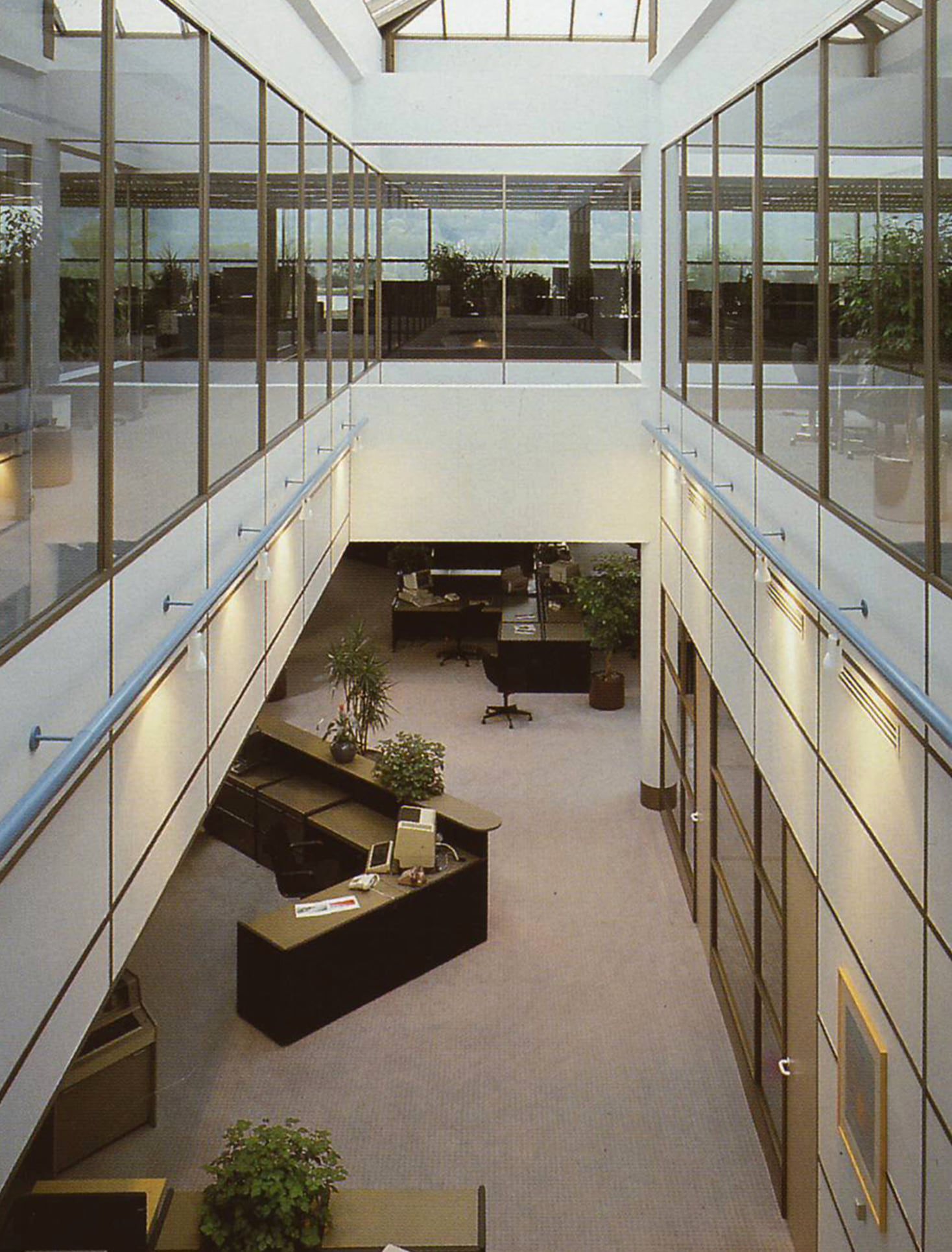
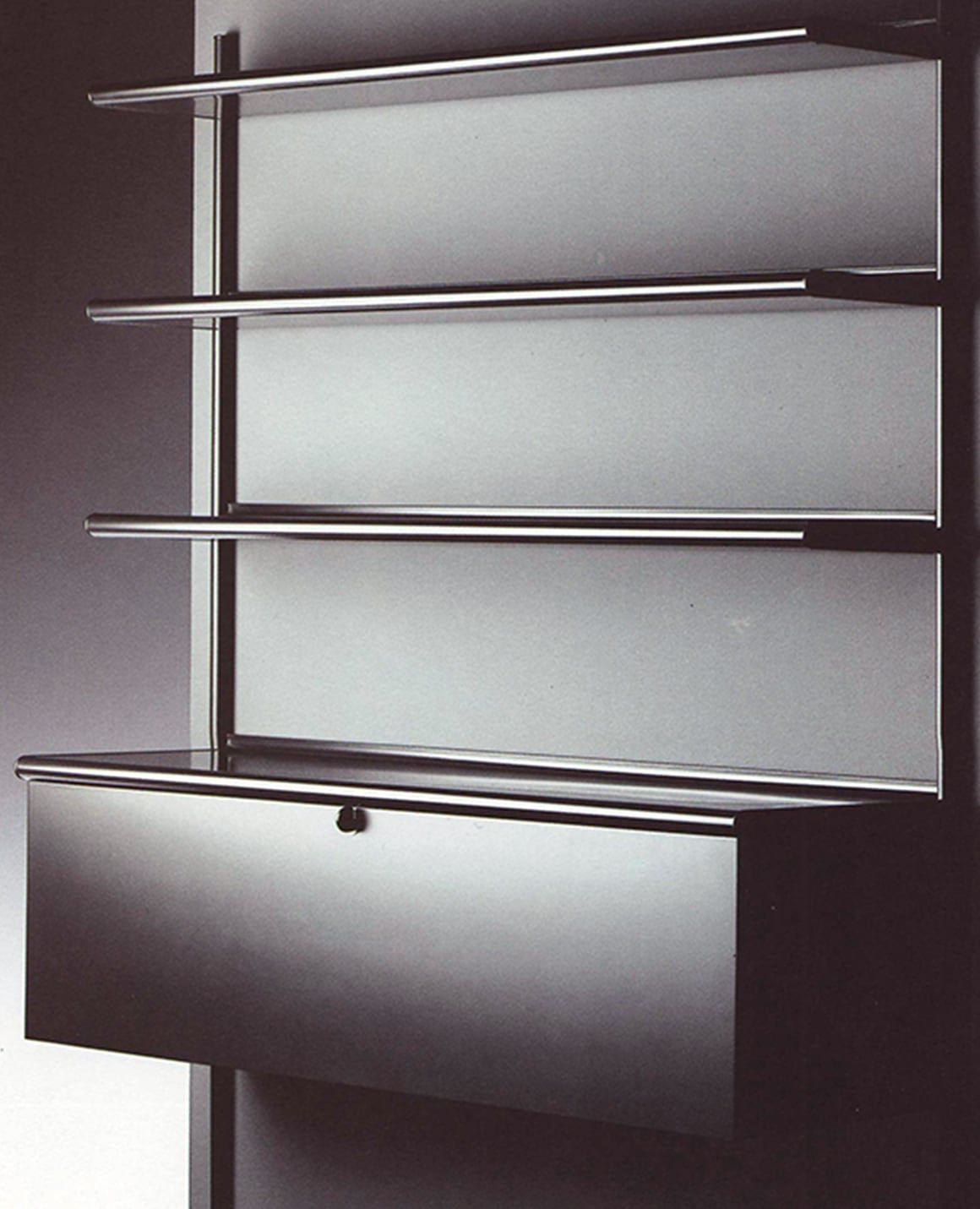
Age 51
In 1982, Otto Zapf builds on the success of the Zapf Office System with the Zapf
Plus Office System.
The system introduces innovations heralded as “invaluably human.”
The Zapf System is commissioned to Knoll International in 1983 to
furnish the
newly-built headquarters of Pacific Telephone in San Ramon Valley, California. The
7,500 work
stations constitute the largest single commission in the industry.

The Zapf Plus system, signifying the new gold standard among innovative American companies, becomes so popular that Knoll refers to it simply as “The Zapf” in advertising and the press commented that "Zapf is now used in the same way that people might say Porsche.”
Texaco, General Electric, Citicorp Bank, CBS, and Apple all enhance their offices with Zapf Designs.
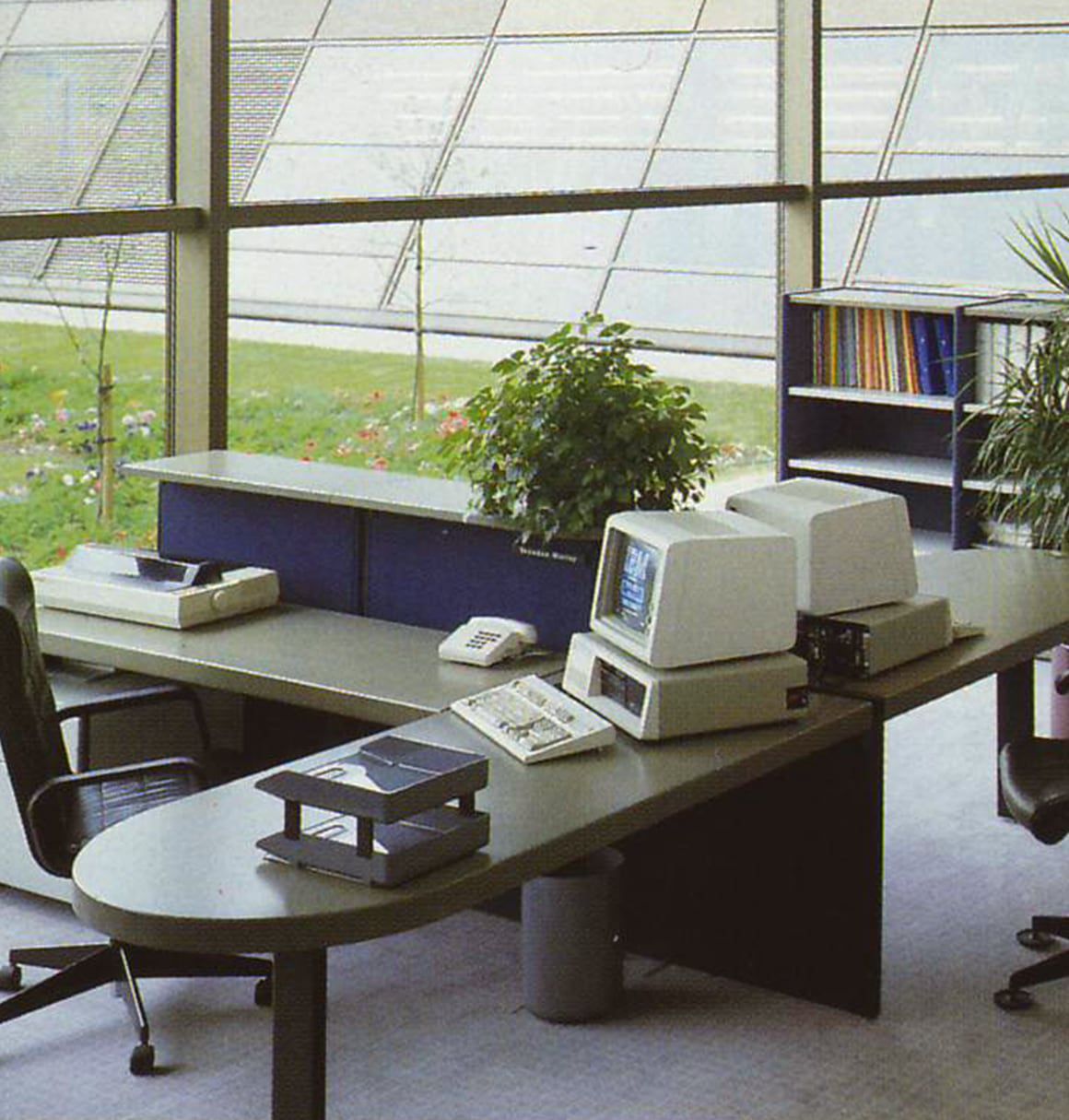
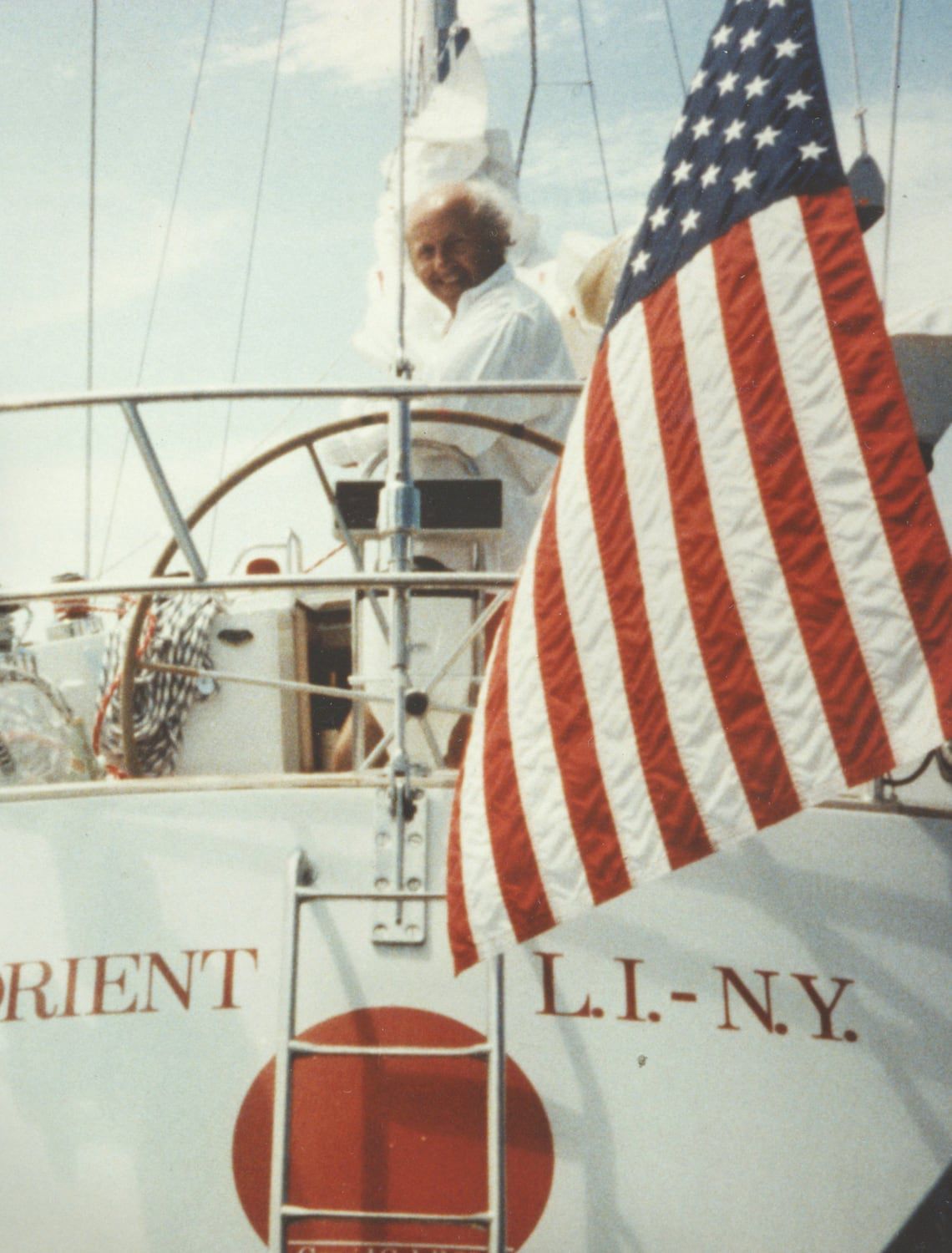

Age 53
In 1984, as the threat of nuclear war hangs over the world, Otto Zapf sets up a second family home and studio in Orient, a small hamlet on the North Fork of Long Island. The land he chooses is wild and secluded, visible only from the sky, the vantagepoint from which he sees it for the first time.
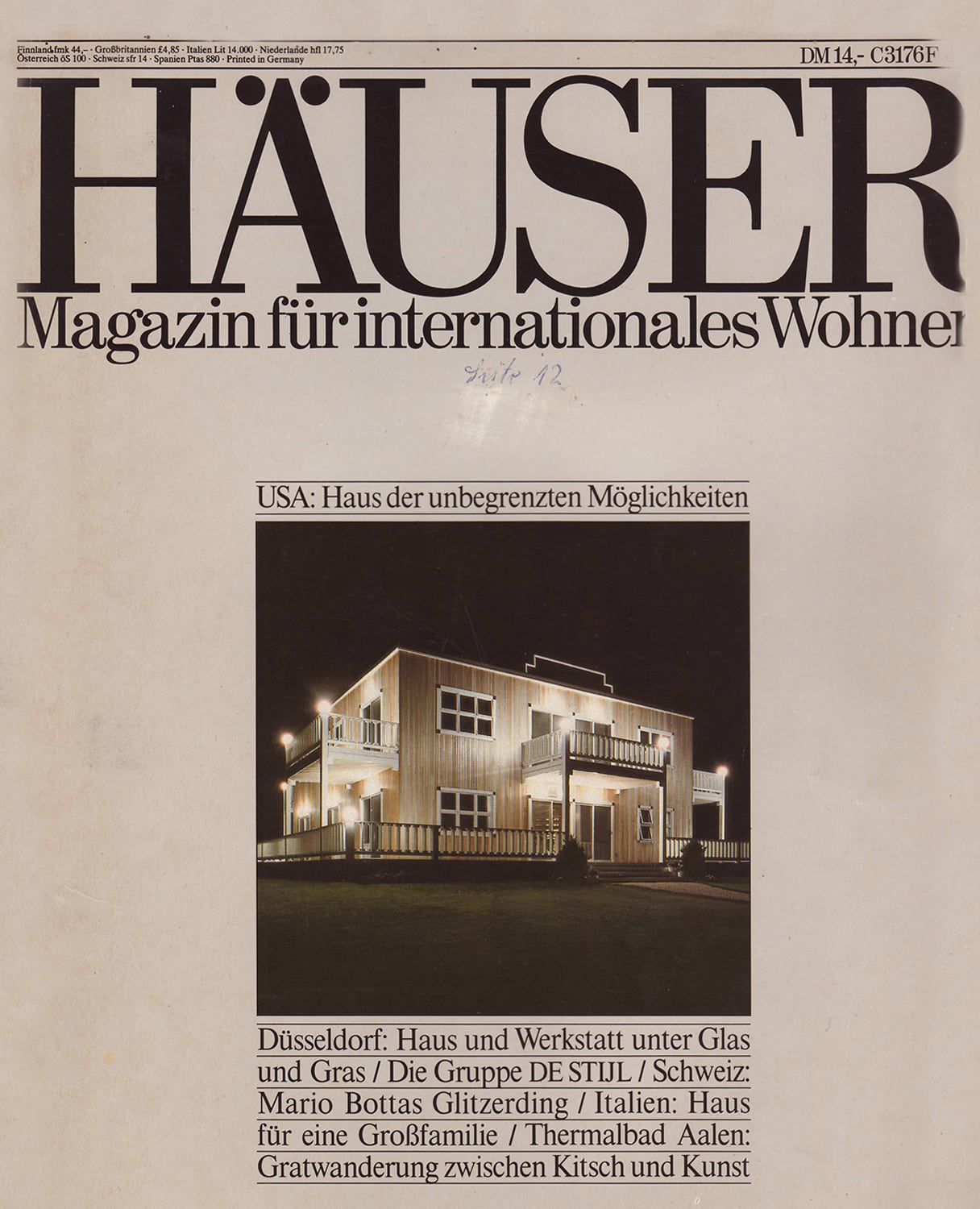
Here, he dedicates himself to engineering every detail, from how and where the light will fall, to how the grass should be cut, to how to enhance harmony and beauty across the entire home. “There was a line where the manicured grass met the wild grass,” says his daughter Carolina who grew up in the house. “This line had to be cut in a soft shape, like the side of woman.”
During this time, Zapf also created the Wingset shelving, inspired by the ergonomics of airplane wings. The shelves are made of a hollow aluminum, creating shelving that is sturdy, very light, and will not bend. The Zapf Design team included Manfred Hallwig, Harold Jaeger, and Josel Kuchinke.


Age 58
In his early 50s, Otto Zapf’s love of problem-solving, dedication to improving life, and commitment to “designing with people in mind,”, all come together in the design of the Aurora office system for US-based company Allsteel. A design triumph that took nearly 10 years to complete, the Aurora office system wins the “Best of Neocon” award and is said to be the most thought-out office space of all time (still true more than three decades later).

The Aurora is a breakthrough not only in electrical innovation (power and data cable management ingeniously integrated directly into the furniture), but in the supreme organization created through a simple line of color. “Such a complex program of many, many parts and options requires a continuous common thread that connects everything,” Otto Zapf wrote. “The accent color was born not as a surface, but as a line.”
Also in 1989, Otto Zapf designs the first-class Senator Lounge for Lufthansa, in collaboration with Allsteel.
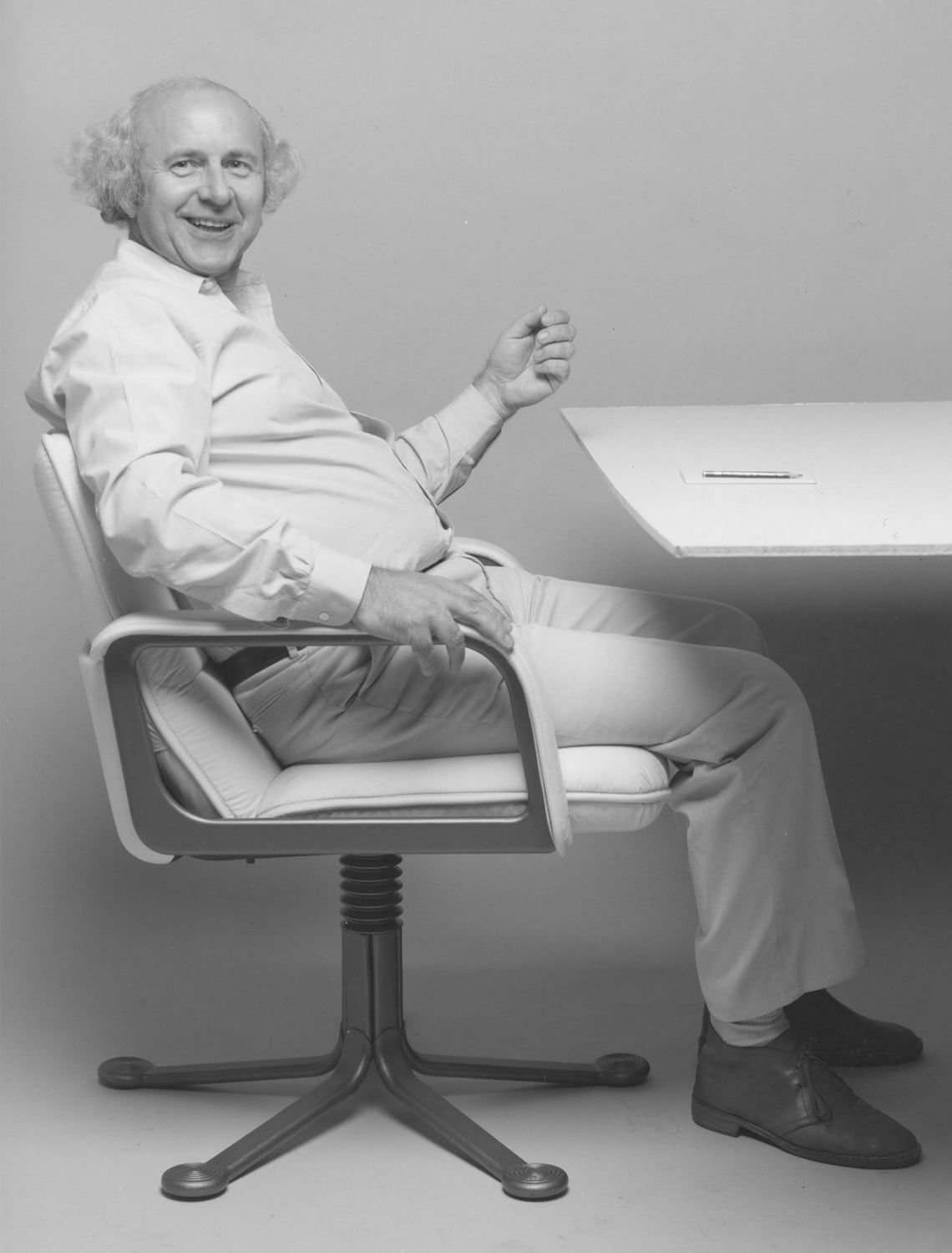

Age 69
In the early 2000s, Otto Zapf dedicates himself fully to rethinking and redesigning the chair and how we sit. He spent much of this time engineering, drawing, prototyping, and patenting for something he passionately believes in: people need to sit well in order to be well.
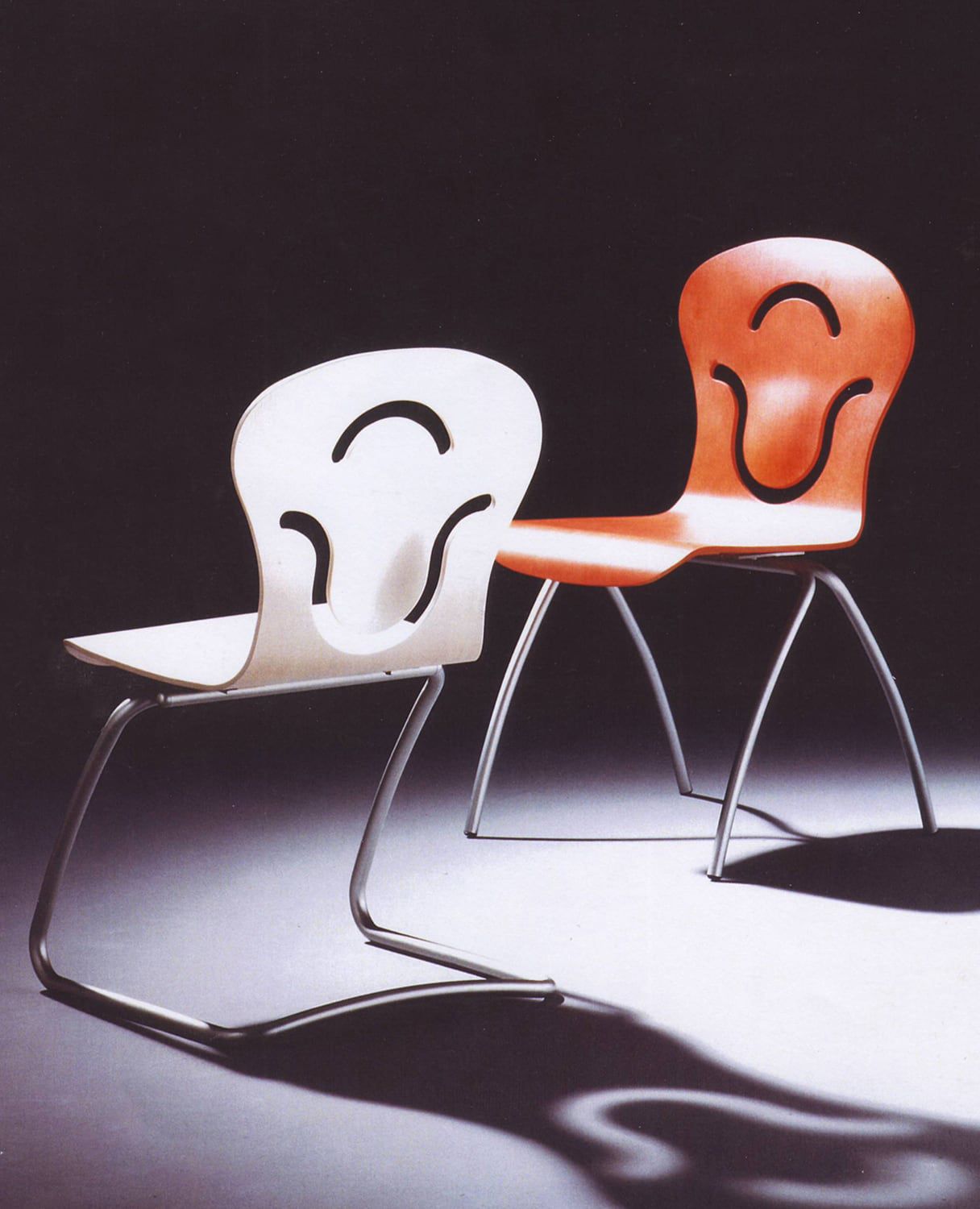
In fact, seating has yet to be solved to this day. Studies confirm that sitting for eight hours in today’s chairs poses a huge risk to our health. Otto Zapf, again, proves ahead of his time. A quote he lives by:
“Nothing is more powerful than an idea whose time has come.” – Victor Hugo
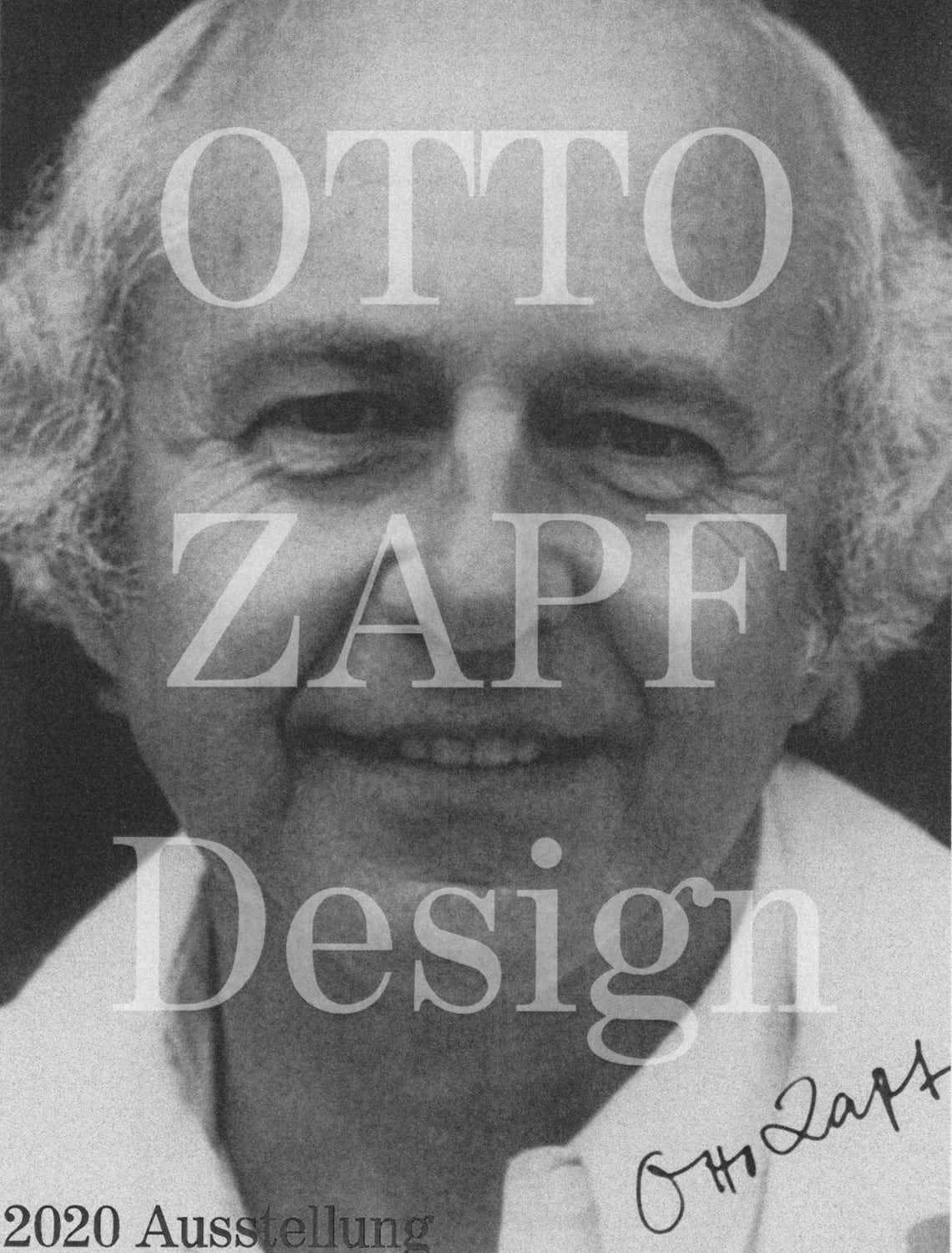
Age 87
Otto Zapf’s designs have endured the test of time, and decades later continue to inspire new generations of designers. As with many designers whose work is ahead of its time, sometimes it takes the world a while to catch up.

Carolina Zapf & Norbert Roeske.
Otto Zapf passes away in 2018. A retrospective of Otto Zapfs works opens in Eschborn Germany in 2020, curated by Norbert Roeske at the Stadtmuseum creating a full circle back to where his family was first displaced to in 1945.